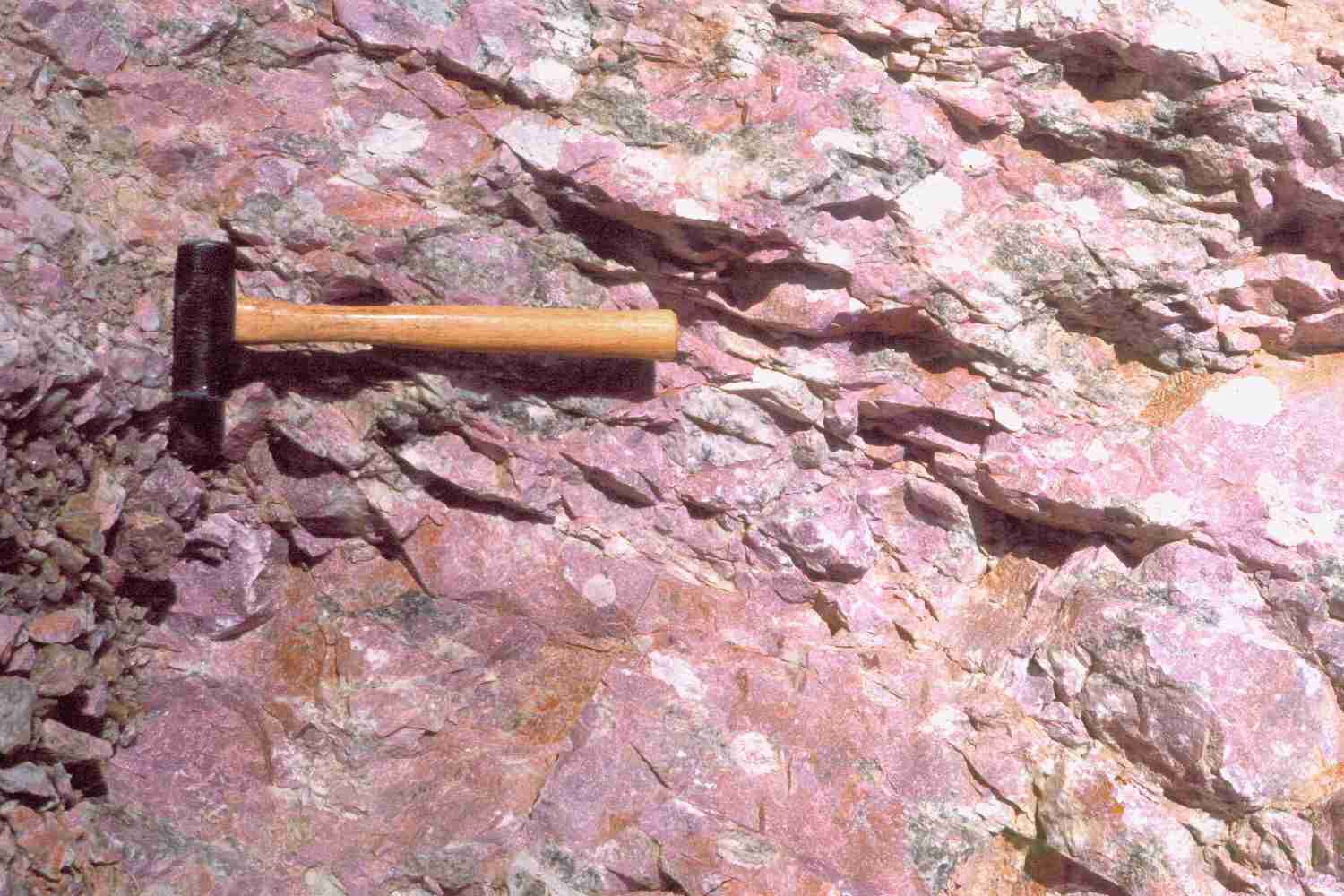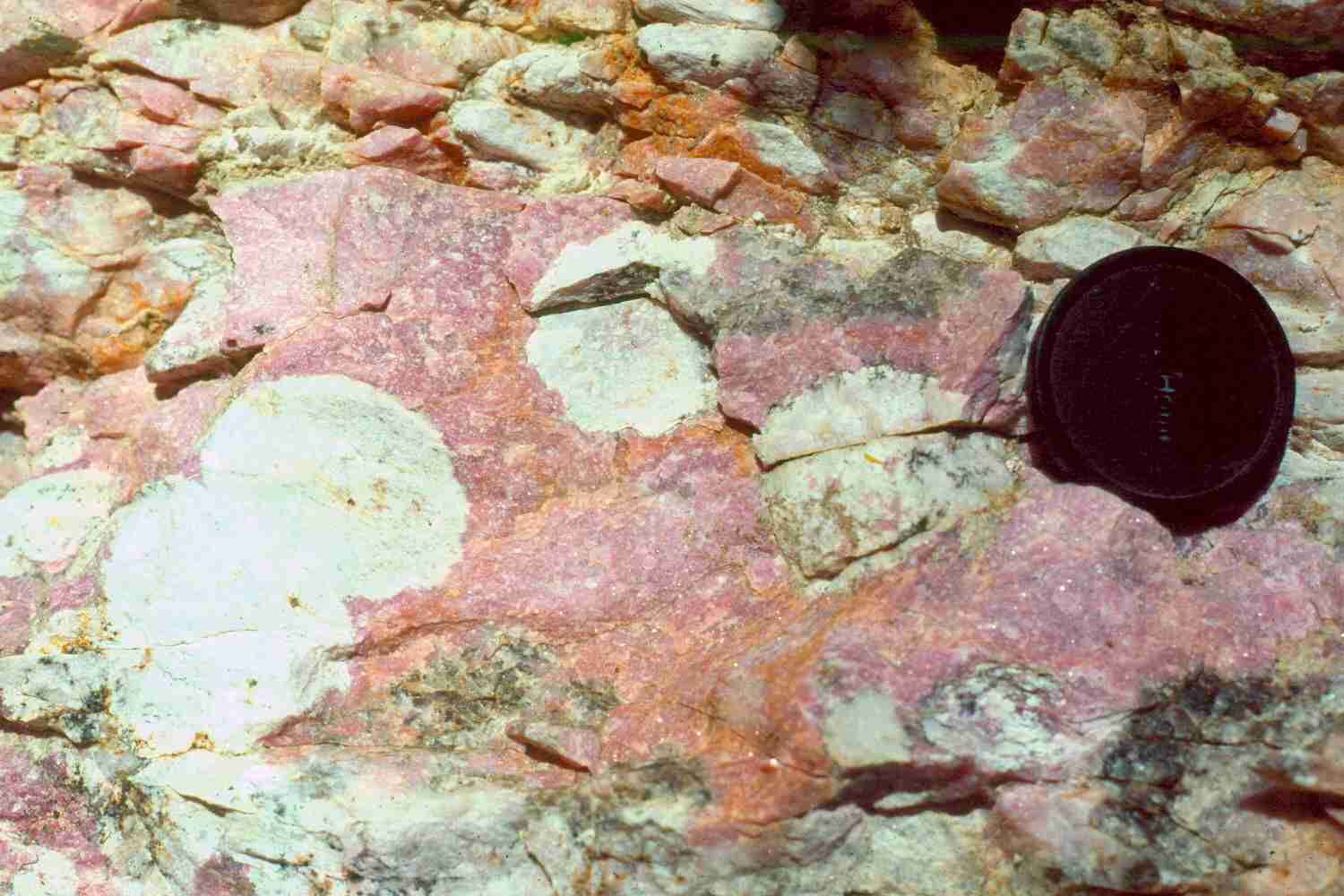|
(revised 12/03/2003)
Comments and Questions Mike Menzies asks this question about pegmatites: to what extent is replacement a valid late-stage process within pegmatites? If it is, in particular for "albitization" (replacement of K-spar by albite), then what is the disposition of the K that must be displaced by the Na? The pegmatite literature, through until the present, contains many references to "replacement" and "replacement zones". The most common contexts appear to be 1) "albitization" which is proposed as a process of late-stage replacement of K-spar by albite within the inner zones of pegmatites, and 2) late-stage formation of pods of secondary phosphate minerals. It appears, however, that there is still disagreement, in particular for albitization, as to whether this represents true replacement rather a late stage in the normal progression from crystallization of K-spar to that of albite, with falling temperature within the pegmatite system. While most references to albitization are to LCT-family, intruded / exterior pegmatites, I have also seen the process proposed for NYF-family interior pegmatites, e.g. those of the Younger Granites in Nigeria. If "albitization" does represent replacement, then what is the disposition of and the sink for the K that would have to be displaced by the Na, and the corresponding field evidence of this displacement? Reply by D. London Let me get the ball rolling on this question posed by Mike Menzies. Below I have cut-and-pasted together some relevant paragraphs of my chapter (in preparation) "Geochemistry of Alkalis and Alkaline Earths in Ore-Forming Granites, Pegmatites, and Rhyolites" for the upcoming GAC-MAC short course on rare-element geochemistry and ore deposits (see the posting for this short course under PIG "Events"). These convey my sense that the concept of replacement has been overused, especially where evidence of replacement is lacking. There are alternative ways to account for monominerallic bodies, such as cleavelandite masses, in pegmatites. In some cases, these bodies of a single mineral are not readily explainable, but that should not lead mineralogists and petrologists to infer some process for which there is no supporting evidence or feasible mechanism. I do certainly believe, however, that large-scale replacement does occur. The famous "spotted rock zone" at the Harding mine, New Mexico (scroll down for photos of Li-mica after spodumene and microcline, relicts of which form rounded masses in the pink mica matrix), is an instructive example that replacement may be so pervasive that remnants and forms of the minerals being replaced can be scarcely discernable or completely obliterated. "In the pegmatite literature, terms such as 'albitization', 'K-feldspathization', 'tourmalinization', etc. are commonly used to denote replacement zones of high chemical variance (e.g., monominerallic zones), or of unusual mineral assemblages (e.g., Cameron et al., 1949; Jahns, 1955), even though textural or other chemical evidence of replacement is commonly lacking, and the constraints of mass or volume balance of replacement are not assessed. These interpretations stem from the presumption that eutectic crystallization on the granite liquidus produces invariant or low-variance assemblages, i.e., subequal proportions of K-feldspar, albite, and quartz, with only minor concentrations of normally accessory minerals. Experimentation with granitic liquids, even those of eutectic composition, at subliquidus and subsolidus temperatures shows that the crystallization response of these liquids generally does not produce simultaneous growth of eutectic assemblages, but rather monominerallic zones in sequence (e.g., London et al., 1989; Evensen et al., 2001; London, 1999, 2003). Adding constitutional zone refining to this process, monominerallic layers of common or of normally rare minerals (beryl, Ta-oxides, etc.) are expected rather than problematic. This does not mean that all monominerallic zones are products of crystallization from melt, but it negates the presumption that they are hydrothermal replacements where such evidence is lacking." "Subsolidus internal alteration. In the more evolved members of rare-element pegmatites, the alkaline components produced by the build-up of alkali borates, phosphates, or halides promote localized alteration that is pseudomorphic after primary, coarser-grained minerals. In the lithium aluminosilicates, Li is exchanged for Na (NaLi-1) or K (KLi-1), giving rise to pseudomorphism by fine-grained albite, albite + eucryptite, or albite + muscovite (e.g., London and Burt, 1982b). Replacement of lithiophilite-triphylite (Li(Mn,Fe)PO4) mostly entails progressive substitution of Mn or Fe by Ca (Ca(Mn,Fe)-1) and concomitant loss of Li and oxidation from valences of 2+ to 3+ (e.g., London and Burt, 1982b). In montebrasite (LiAlPO4[OH,F]), the alteration to apatite, brazilianite, and muscovite follows mostly from the same exchange operators. In tourmaline, the exchange KLi-1 coupled with loss of boron alters elbaite to pseudomorphs by lithian mica. Based on field strength of the cations being exchanged, these metasomatic replacements reflect reaction between alkaline fluid and more acidic solid phases (London and Burt, 1982b). This trend is reversed when the initial wave of alkaline metasomatism is succeeded by acidic exchange reactions, which mostly take the form of HK-1 exchange that converts microcline to mica. Oscillations in the acid-base character of fluid chemistry (e.g., Korzhinskiy, 1970), and hence the chemical character of replacement, are expected to vary in space and time within pegmatites because each zonal assemblage, in some cases individual crystals, acts as a system that is open to fluid flow across the system. I reiterate, however, the internal alteration of the sort described above is mostly minor in relation to total pegmatite rock volume, and virtually absent in all but the most fractionated granitic pegmatites." "An important aspect of equilibria involving saline or non-saline aqueous vapor and minerals containing alkalis or alkaline earths (or equivalent melts) is that the composition of vapor varies in a regular, systematic way, as in the case of mineral-melt equilibria (e.g., Blundy and Wood, 1994). This is evident from the extensive work of Lagache (e.g., Lagache and Weisbrod, 1977; Carron and Lagache, 1980, and others cited above). The spatial distribution of alteration aureoles dominated by fluid chemistry (e.g., potassic, phyllic, and argillic zones) around felsic plutons also is regular, continuous, and predictable (e.g., Rose and Burt, 1979; Wallace, 1991). Even where reaction gradients are sharp (e.g., skarns), the reaction sequence is organized and continuous (e.g., Rose and Burt, 1979). The point to be made here is that element fractionation between minerals and aqueous vapor is as regular and systematic as that between minerals and melt. Though fractionation may occur, chemical coherency among elements of a periodic group is not lost. Hence, aberrant or chaotic patterns of element fractionation, which are commonly attributed to the effects of an aqueous vapor phase acting on minerals, are no more explainable by or unique to a vapor phase than to a melt."
Figure 1.
Figure 2. You can submit questions and comments in electronic formats only to Dr. David London at dlondon@ou.edu |


